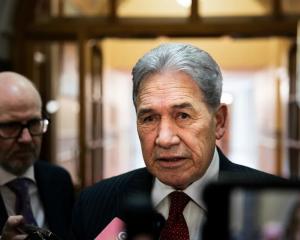Up to a five-year limit on the dole and having payments strictly managed are two of many changes suggested by the Working Welfare Group (WWG) to discourage long-term dependance on welfare.
WWG, formed as part of the Government's welfare package announced in March, released its options paper today, where it gives solutions to long-term welfare dependency.
In August WWG said New Zealand's welfare system was outdated, unsustainable and resulted in many people becoming long-term beneficiaries stuck in a poverty trap.
Chairwoman Paula Rebstock said around 170,000 working age New Zealanders had been on a benefit for at least five of the last ten years.
"This long-term benefit dependence has led to intolerable social costs for the individuals themselves, their children, the broader community, employers and taxpayers."
WWG today gave numerous options focused on assessment, expectations, interventions and financial incentives all aimed at getting people back into the workforce.
WWG said could become a work-focus system by stepping up work expectations and obligations of beneficiaries as their time on a benefit increases.
It could have more resources in helping people secure work before applying for a benefit, or could reduce costs by having active employment interventions.
A six-month threshold could also be introduced, at which point a person identified as a high-risk of long-term dependency would be placed in either paid or unpaid work.
WWG said expectations to look for and accept work could be clearer and more proportionate, and credible and enforceable penalties should be in place.
For solo parents on the benefit, they could get part-time work from when the child is six years old, or three years old and full-time when the child is 6.
As for boosting financial incentives within the system, WWG suggests moving people with part-time work from the benefit system to the tax system by having an in-work tax credit.
Increasing the financial incentives for people working part-time to work more hours by having a higher deduction rate when they earn less, or increase the deduction rate for people with no work expectation.
Additional help could be give to people when they get a job. More money could be allocated to support them during the transitions, and costs of transport, childcare, or other direct costs could be covered up to a cap.
Strong signals should be sent to discourage semi-permanent use of the benefit, WWG said, which could include keeping people active while on the benefit, including a limited-work-for-the-benefit: two days per week or 16 hours after 2 years continuous duration.
WWG said people on a benefit could also be strictly managed when people who could work were using their funds improperly, or components of the benefit could be stripped when people were using it on an almost-permanent basis.
A time limit, such as five continuous years on a benefit could also be introduced for people who can work, with reliance on hardship assistance beyond this period.
The Working Group said it did not have preferred options at this stage and would be making final recommendations to the Government in February 2011.
The Government welfare policy drew criticism from welfare groups and opposition MPs concerned that it would demonise beneficiaries, leading to an alternative working group being set up.
This group is expected to release a report in December.












